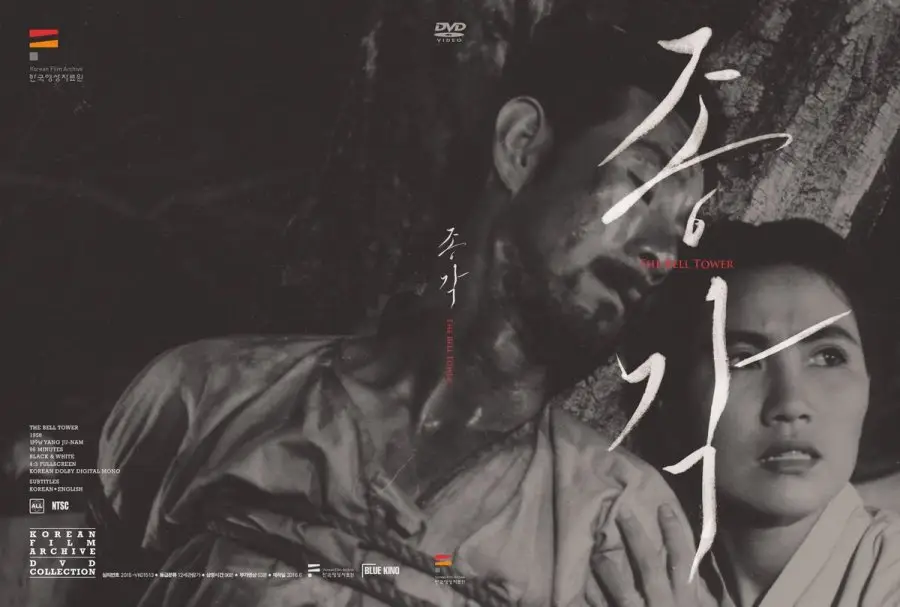The Bell Tower (종각) 1958
The ‘Bell Tower,’ subtitled ‘Missing Another Dawn,’ was released in 1958. Directed by Jang Ju-Nam, who notably had a more extensive career as an editor than director, this film represents a rare outing, with only five directing credits to his name. Adapted from the poignant story “Bell Maker” penned by Gang Ro-hyang, the film showcases two of the era’s most revered stars, Moon Jung-suk and Heo Jang-kang, who masterfully portray a range of characters, revealing their versatility and depth throughout the narrative.
Set in a tranquil and contemplative backdrop of a temple, the story unfolds in a linear yet nostalgic manner, primarily delivered through evocative flashbacks. At the heart of the narrative is the elder Seok-seung, compellingly portrayed by Heo Jang-kang. He shares his profound and bittersweet life experiences to the inquisitive young Yeong-shil, brought to life by Moon Jung-suk. Drawn to the temple in refuge, the ringing of the bell becomes their lifeline—a sentimental connection that urges Seok-seung to reflect on the tribulations of his past.
The film’s structure is meticulously crafted, oscillating between Seok-seung’s poignant memories and his present-day dialogues with Yeong-shil, who guides the narrative’s progression through her probing questions. This storytelling technique mirrors traditional folk narratives, bestowing the film with a lyrical quality, almost as if they are gathering around a fire to listen to age-old tales of wisdom and woe.
One of the film’s most enchanting features is its bold decision to have the leading actors embody multiple roles. This artistic choice not only enriches the storytelling but also enhances the fabric of the folk tale, as the characters’ identities intertwine across the web of their shared memories. Each toll of the bell sends ripples through the air, summoning a powerful range of emotions—from a sense of foreboding to an uplifting hope—while the hauntingly beautiful score envelops the audience in a shroud of melancholy.
While the narrative unfolds linearly, it subtly threads traditional Korean mysticism and spirituality, centering around the bell itself. Seok-seung lays bare his profound connection to the bell, revealing that he has, in essence, sacrificed part of his very soul in its creation. In contrast, Yeong-shil gazes toward the horizon, hinting that her fate is intricately linked to the bell’s destiny.
The film is set against the historical backdrop of Korea, a nation grappling with the challenges of Japanese occupation and the devastation wrought by war. This context seeps into the narrative, serving as a stark backdrop highlighting the painful sacrifices of spirituality and cultural identity often made in the struggle for survival amid chaos. The bell, a symbol of hope and protection, is now just of value for its metal content, reflecting the harsh realities of the characters’ existence. Their lives are steeped in hardship, marked by bleakness and sorrow, with Yeong-shil offering a flicker of optimism in the face of despair.
Despite the gripping performances from Moon Jung-suk and Heo Jang-kang, ‘The Bell Tower’ remains a moderate cinematic endeavour. While it beautifully captures the essence of its themes, in comparison to other films released just a few years later it feels overly simplistic and predictable. It is a well-crafted story, which feels like a precursor to more exemplary films released during the golden age, however, it doesn’t hold enough weight in its runtime to be a must-not-miss film.
